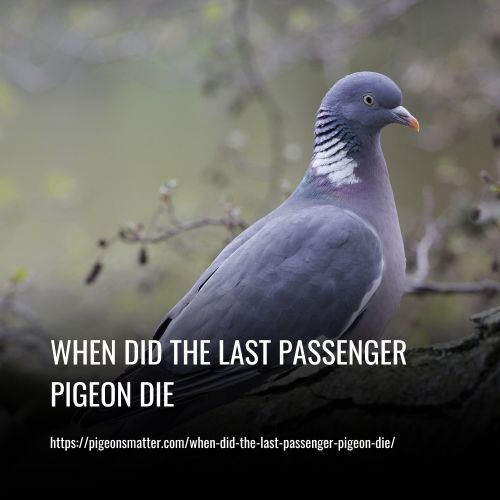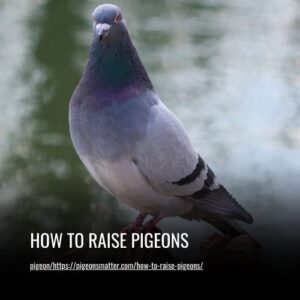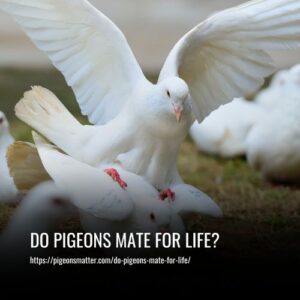The last known passenger pigeon, a female named Martha, died on September 1, 1914, at the Cincinnati Zoo. She was approximately 29 years old and had a palsy that caused her to tremble. Throughout her life, Martha was never able to lay a fertile egg. This year, 2014, marks the 100th anniversary of the extinction of the passenger pigeon.

The Story Of Martha
By the time we realized the passenger pigeon was in real trouble, it was too late. The last known wild pigeon was killed in Ohio in 1900. After that, a single captive flock existed here at the Cincinnati Zoo. Breeding attempts failed, and by 1910, a lone female named Martha remained.
A reward of $1,000 was offered to anyone who could supply a mate for Martha, but none was found. When Martha passed away on September 1, 1914, it was the first documented extinction of a species at the hand of man. Her body was frozen and now resides at the Smithsonian in Washington, D.C.
Background on Passenger Pigeons
Passenger Pigeons were once one of the most abundant birds in North America, with flocks numbering in the millions. They were a species of wild pigeon that belonged to the same family as homing and carrier pigeons, and they were renowned for their huge flocks that darkened entire regions of the United States when they flew overhead. In the 19th century, however, market hunters decimated their numbers and by 1914 passenger pigeons had become extinct due to overhunting and habitat destruction.
The last known passenger pigeon was a female named Martha who died on September 1st, 1914 at the Cincinnati Zoo. She is now preserved in a block of ice at the Smithsonian’s National Museum of Natural History so that visitors can still see her as an example of what used to be one of the most populous avian species on Earth. Today we remember this abundant bird through research into re-creating its genetic diversity through homing pigeons, and also through Helen James’ efforts to sequence its full genome from museum specimens. Hopefully someday soon we will have living passenger pigeons among us once more!
The Decline in Numbers and Extinction Date
The decline of the passenger pigeon population is an event that has been studied for centuries. By the 19th century, their numbers had been drastically reduced due to overhunting and habitat destruction. This led to the species becoming virtually extinct by 1900. The last known living passenger pigeon, named Helen James, died at the Cincinnati Zoo in 1914.
This extinction marked a tragic moment in history, as it was the first time since prehistoric times that an entire species had gone extinct due to human activity. It also serves as a reminder of how fragile our planet’s biodiversity is and how quickly our actions can have lasting consequences on other species. We must take steps to protect our world’s precious wildlife before we lose any more endemic birds like the passenger pigeon.
How Did The Last Passenger Pigeon Die
The last known passenger pigeon died in 1914. The species became extinct due to two main factors: widespread hunting for pigeon meat and loss of habitat. The large flocks and communal breeding habits of the passenger pigeon made them easy targets for hunters, leading to a significant decline in their population. Additionally, the destruction of their natural habitat further contributed to their extinction.
How Old Was Martha The Passenger Pigeon
Martha, the passenger pigeon, was 29 years old at the time of her death. She died at 1 p.m. on September 1, 1914, in the Cincinnati Zoological Garden. Martha was the last of her species and her death marked the extinction of the passenger pigeon, highlighting a sad chapter in wildlife conservation.
FAQs
The lifespan of a passenger pigeon in captivity was at least 15 years, with Martha, the last known living passenger pigeon, living to be at least 17 and possibly up to 29 years old when she died. The lifespan of a wild passenger pigeon is unknown.
Yes, passenger pigeons were used in World War I by naval aviation to send messages when radio use was not possible. Aviators would carry the pigeons with them and release them when they crashed, so that they could send messages for help.
Cher Ami was a famous Passenger Pigeon. He was a male homing pigeon who was used by the U.S. Army Signal Corps during World War I. Cher Ami was trained by American pigeoners and had been donated by the pigeon fanciers of Britain.
The real name of the passenger pigeon is Ectopistes migratorius. It is a species of pigeon that belongs to the order Columbiformes.
The myth of the passenger pigeon is that billions of birds would swarm together during the breeding season, darkening the sky and forcing people to seek cover from the abundance of droppings. However, this is believed to be an exaggerated description of the immense flocks of passenger pigeons that used to populate North America.
Conclusion
The passenger pigeon was once one of the most abundant birds in North America, with huge flocks that stretched for miles and millions of birds estimated to exist. But sadly, due to overhunting by market hunters and a lack of genetic diversity, the last living passenger pigeon died in 1914.
Although we can’t bring back the passenger pigeon, scientists are attempting to restore bird populations that have suffered from overhunting through projects like The Passenger Pigeon Genome Project. This project involves using DNA from museum specimens and living relatives like band-tailed pigeons to reconstruct the genome of the passenger pigeon.
We owe it to ourselves and future generations to make sure we don’t lose any more species like the passenger pigeon ever again. With advancements in genomics, it might just be possible for us to recreate this avian species—and with it, our shared history with these beautiful birds.


